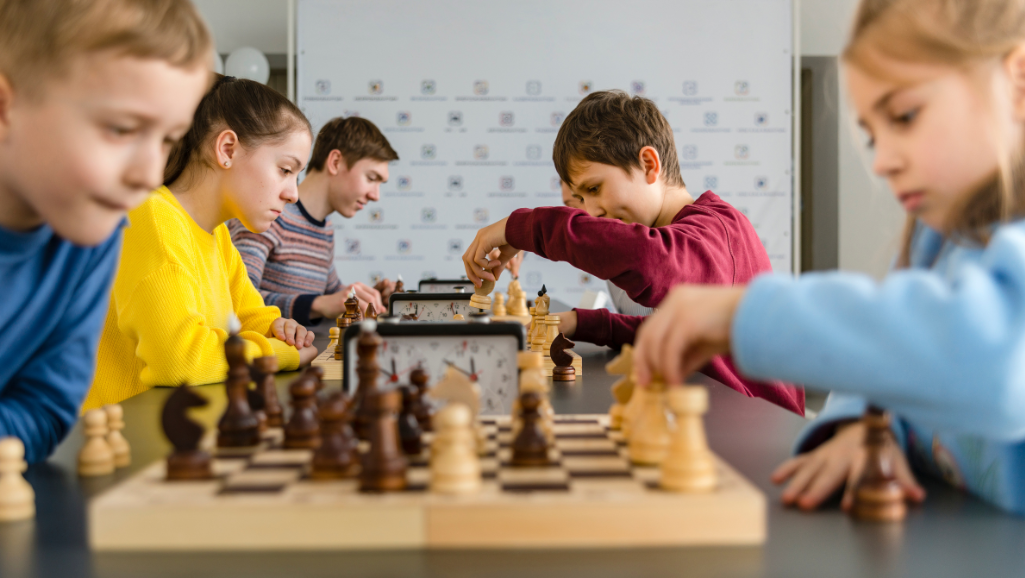Ever wondered what the oldest indoor game for kids is? You’re about to embark on a fascinating journey back in time. We’ll delve into the histories of chess, backgammon, mancala, and draughts. You’ll discover their origins, uncover their mysteries, and understand why they’ve remained popular. So, sit back, relax, and let’s explore these timeless games that have captivated children’s imaginations for centuries.
The Essence of Indoor Games
You might not realize it, but indoor games play a crucial role in your child’s development. It’s more than just fun and entertainment; there’s a dash of game psychology involved that aids in honing their cognitive skills. Indoor play is such a fundamental part of a child’s growth that it’s often overlooked.
The essence of indoor games is not merely to keep your kid occupied. Games like hide and seek, puzzles, or even card games, help to stimulate their problem-solving skills, improve their memory, and enhance their concentration. They’re learning to strategize, to predict, to understand cause and effect. That’s game psychology for you; it’s subtle but impactful.
Moreover, indoor play promotes social interaction. When your kid engages in a game with their peers or with you, they’re learning how to communicate, how to wait their turn, and how to cope with winning or losing. They’re building emotional intelligence, and that’s something we often don’t associate with indoor games.
Tracing Back the History
Let’s dive into the past for a moment, as it’s interesting to note that some of the games your kids are playing today have been around for thousands of years. Tracing back the history of game origins can be a fascinating journey into our shared past, revealing insights into how our ancestors sought indoor entertainment.
Consider these intriguing facts:
- Ancient Egyptians enjoyed a board game known as ‘Senet’ around 3100 B.C. This strategic game, found in the tombs of Pharaohs, is one of the oldest known board games.
- The game of ‘Go’, originating from China over 2,500 years ago, is another ancient indoor game. It’s a strategic game of territory, still widely played today.
- Chess, an indoor entertainment classic, has its roots in northern India in the 6th century.
These historical games have shaped modern indoor entertainment, serving as the blueprint for many current games. The evolution of these games over time showcases humanity’s enduring love for strategic, fun, and entertaining ways to pass the time indoors. It’s a testament to our collective ingenuity and the timeless appeal of play.
Chess: A Game of Strategy
In your quest to uncover the world’s oldest indoor games, one can’t overlook the enduring appeal of chess, a strategic game that’s captivated millions for centuries. Tracing back chess origins, experts believe it was conceived in northern India during the 6th century, making it one of the oldest known games still played to this day. The game requires a unique combination of strategic planning, tactical understanding, and foresight, which has been enchanting the minds of young and old alike.
Let’s delve into the strategic benefits that chess provides. It’s not just about moving pieces across a board; it’s about outthinking your opponent, predicting their moves, and creating a winning strategy. It reinforces critical thinking and problem-solving skills, enhancing mental agility and cognitive development. Kids who play chess often show improvement in concentration, patience, and decision-making abilities.
Moreover, the beauty of chess lies in its simplicity and complexity. Each piece has a distinct way of moving, yet the possibilities are limitless, making every game a unique experience. In essence, chess is a timeless indoor game, combining strategy, patience, and mental agility—it’s no wonder it has survived the test of time.
Exploring the World of Backgammon
Diving into the realm of ancient board games, it’s hard not to be intrigued by backgammon, a game you’ll find has a rich and captivating history. Originating almost 5,000 years ago in Persia, backgammon has stood the test of time, continuously capturing the interest of successive generations.
- Backgammon Variations: You’ll discover multiple versions of backgammon, each with its own unique set of rules. For example, there’s ‘Narde’, popular in Russia, where all pieces move in the same direction. Then there’s ‘Takhteh’, a Persian version that allows for more strategic play.
- Cultural Influence: Backgammon’s influence transcends borders, having been embraced by various cultures globally. For example, in Greece, it’s known as ‘Tavli’, and is a staple in social gatherings, while in the Middle East, ‘Tawla’ is an integral part of café culture.
- Strategic Complexity: Despite its seemingly simple rules, backgammon is a game of strategy. It’s a blend of luck and skill, where you must anticipate your opponent’s moves and adjust your tactics accordingly.
Mancala: The Ancient Game
Moving on from backgammon’s rich history, your journey into ancient games brings you to Mancala, an intriguing game that’s believed to be even older. This game is not just one but a family of board games played worldwide, revealing a fascinating array of Mancala variations. You might be surprised to learn that the mechanics are simple: you scoop out stones, seeds, or beans from one hole and drop them one by one into others. Yet, the strategic depth that emerges from this simplicity is astonishing.
The cultural significance of Mancala can’t be overstated. It’s more than a mere pastime—it’s a reflection of the society, history, and values of the cultures that play it. In many African societies, for instance, Mancala games have been used to teach arithmetic or to decide disputes. It’s a testament to the game’s enduring allure that it’s still widely played today, both in its traditional forms and in modern versions brought to life by digital technology. So, the next time you’re seeking an engaging, educational game for your kids, remember Mancala: an ancient game that’s stood the test of time.
The Continual Popularity of Draughts
While Mancala’s enduring charm has stood the test of time, there’s another age-old game you’ve likely come across: Draughts, which continues to captivate players around the globe. Draughts’ charm lies not only in its simplicity but also in its numerous variations and its cultural significance.
- Draughts Variations: You’d be amazed at the breadth of Draughts variations that exist. Each region has its unique twist, from the double-cornered board of International Draughts to the long-diagonal play in English Draughts. These variations keep the game fresh and engaging for both novices and seasoned players alike.
- Cultural Significance: Beyond being a mere pastime, Draughts holds a significant place in various cultures. In Africa, it’s seen as a way to teach strategy and foresight. Meanwhile, in Europe, it’s appreciated as a timeless classic, a testament to the game’s enduring appeal.
- Continual Popularity: Draughts’ adaptability and cultural resonance have guaranteed its continual popularity. No matter how much technology evolves, there’s something about the tactile satisfaction of moving a piece across the board that keeps players hooked.
In a nutshell, Draughts’ enduring popularity lies in its versatility, cultural significance, and timeless appeal.
Lessons From These Timeless Games
From these timeless games like Draughts and Mancala, you can glean valuable lessons that go beyond mere entertainment. The first thing you’ll notice about these games is their simplicity. Yet beneath this simplicity lie educational aspects that are crucial to childhood development.
For instance, Draughts teaches strategic thinking and problem-solving. Each move demands critical analysis and forethought, honing these skills in young players. Mancala, on the other hand, emphasizes arithmetic and planning. You’re required to count and distribute the game pieces efficiently, fostering mathematical skills and logical reasoning.
Moreover, these games foster social skills and emotional intelligence. They encourage interaction, cooperation, and competition. They teach you to handle victory graciously and accept defeat with dignity. They also instill patience and perseverance, as success in these games doesn’t come instantly but through consistent effort and strategy.














